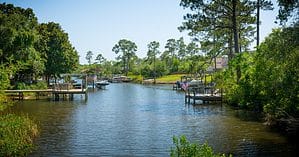Louisiana, known for its vibrant culture and diverse landscapes, has a unique story to tell. This southern state offers a captivating blend of cultures shaped by its historical influences and geographical features. As we set out to explore Louisiana, it’s important to grasp its physical magnitude. From its dimensions in square miles and acres to comparisons with other states, understanding Louisiana’s size is key.
However, the state’s borders aren’t static. They change due to factors such as coastal erosion and rising sea levels. This evolving size poses challenges and opportunities alike, emphasizing the need for informed conservation and management strategies.
So, how big is Louisiana? Let’s embark on this journey to delve into the depths of Louisiana’s size, its implications, and the state’s standing among its peers.
About Louisiana
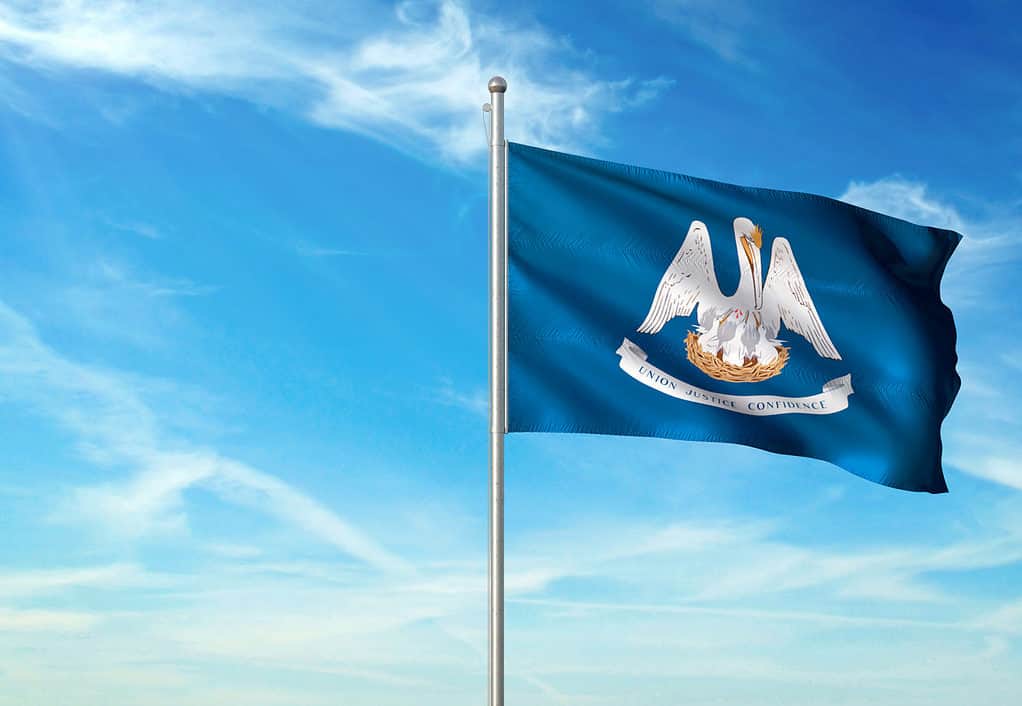
Louisiana is a melting pot of French, African, American, and French-Canadian cultures.
©iStock.com/Oleksii Liskonih
Louisiana sits proudly in the southern region of the United States. Known for its rich history, vibrant culture, and diverse ecosystems, Louisiana is more than just a state. It’s a testament to the unique blend of American, African, French, and Spanish influences.
Historical Overview
Founded in 1812, the state has a vibrant historical background. Its storied past includes Native American civilizations, colonial rule, and significant milestones in the journey to modern America. The fusion of cultures over centuries has left an indelible mark on Louisiana’s cultural landscape, visible in its music, food, festivals, and more.
Cultural Melting Pot
Louisiana stands out as a cultural melting pot. From Creole and Cajun traditions to the world-famous Mardi Gras festival in New Orleans, Louisiana offers a cultural extravaganza that is vibrant, inclusive, and deeply rooted in its history. Its music scene, ranging from Jazz to Blues, further underlines this cultural richness.
Geographical Diversity
From coastal marshlands to piney woods and hill country, Louisiana’s geographical diversity is remarkable. The Mississippi River, which flows through the state, creates fertile plains, while the Gulf of Mexico at Louisiana’s shore adds to its diverse ecology.
Economic Backbone
The economy of Louisiana is versatile, with significant contributions from various sectors. The state excels in agriculture, particularly in the production of rice, sugar cane, and cotton. Energy production, including oil and natural gas, also plays a crucial role. Moreover, Louisiana’s strategic location makes it a trade and transportation hub with one of the busiest port systems in the world.
The Geography of Louisiana
Louisiana’s geography is a canvas painted with diverse landforms and water bodies. From fertile plains and rolling hills to expansive marshlands and serene coastlines, Louisiana’s geography plays a vital role in shaping the state’s climate, biodiversity, and way of life.
Mississippi River and the Delta
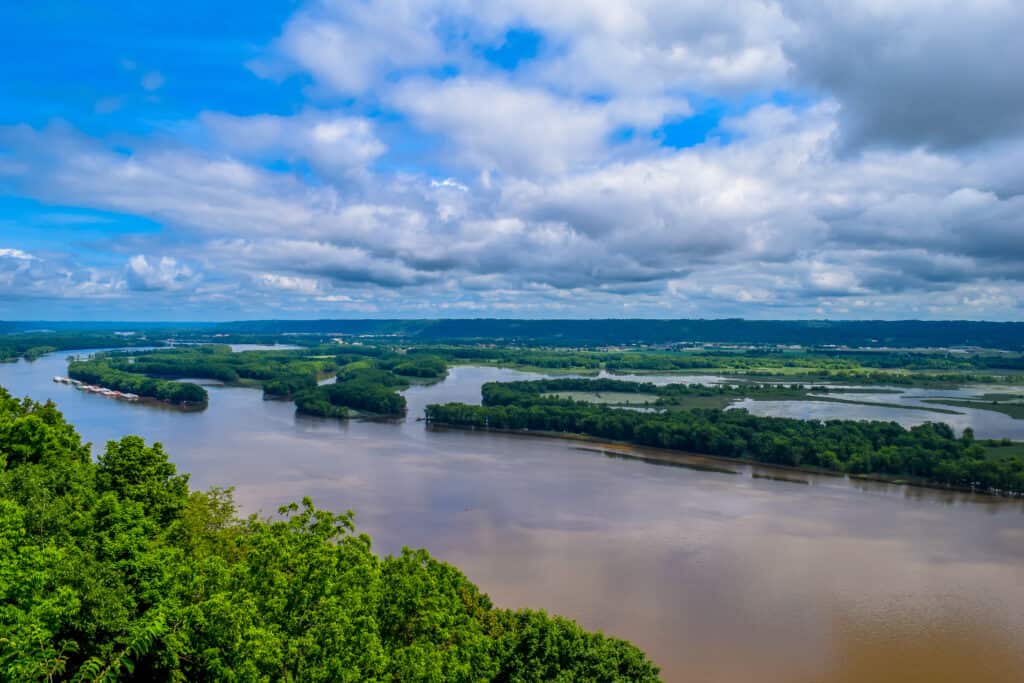
The Mississippi River is home to many interesting creatures.
©EyeTravel/Shutterstock.com
The Mississippi River flows down the eastern boundary of Louisiana, forming an expansive delta. This lush region supports a diverse array of flora and fauna and is crucial to the state’s agricultural sector. The river also aids in trade and transportation, enhancing Louisiana’s economic profile.
Coastal and Wetland Areas
Louisiana’s coastline along the Gulf of Mexico stretches for about 397 miles. This coastline, together with the state’s marshlands and swamps, comprises one of the largest wetland areas in the United States. These wetlands are not only biodiversity hotspots but also serve as a buffer against coastal erosion and hurricanes.
Inland Regions
Moving inland, the geography of Louisiana changes to feature rolling hills and dense forests, especially in the northern and central parts of the state. These areas are home to diverse wildlife and offer numerous recreational opportunities.
Climate Considerations
Louisiana’s climate is largely humid subtropical, with hot summers and mild winters. The state’s coastal and wetland regions influence its weather patterns, making Louisiana prone to hurricanes and high rainfall.
How Many Square Miles (and Square Kilometers) is Louisiana?
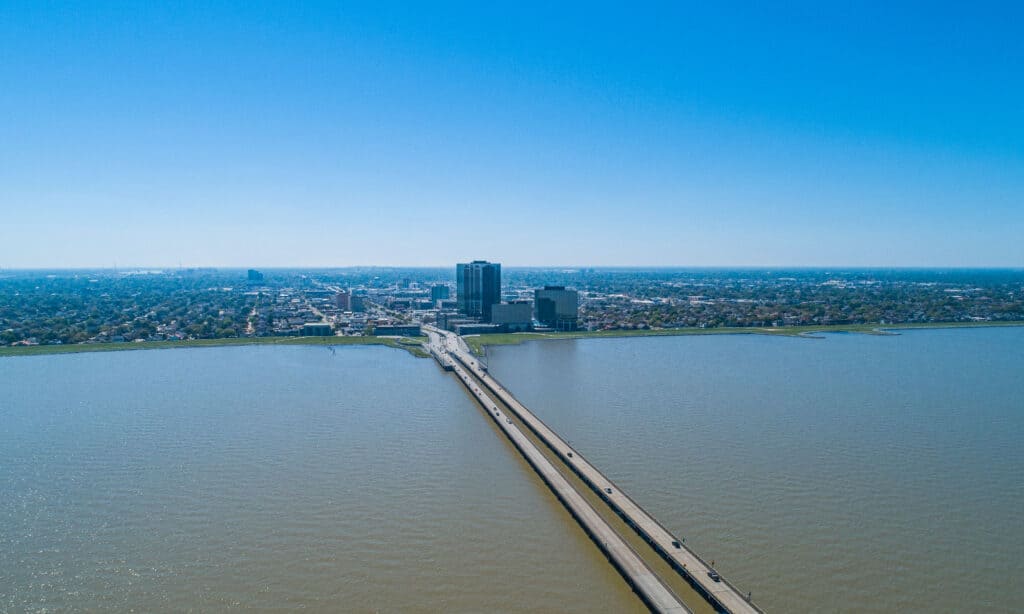
The Lake Pontchartrain Causeway of Louisiana, 23.9 miles long, is the longest bridge in the United States.
©Mark Runde/Shutterstock.com
Louisiana’s vastness, unfolding over 52,377 square miles, is impressive. However, it’s not just the sheer size that matters; it’s the intricate distribution of this area between diverse landforms and water bodies that make Louisiana a fascinating geographical entity.
Land and Water: A Detailed Analysis
The land area of Louisiana, covering about 43,204 square miles, hosts everything from urban landscapes to rural farmlands and unspoiled natural reserves. These lands are a hub of economic activities, including industries, agriculture, and tourism. Additionally, Louisiana’s geographical location in the southern part of the United States, alongside the Mississippi River, makes it a critical location for trade and transportation.
However, Louisiana’s uniqueness lies in its substantial water coverage, with 9,168 square miles of the state’s total area submerged under water. These wetlands, marshes, lakes, and a section of the Gulf of Mexico are not only a cornerstone of Louisiana’s ecosystem but also crucial for its economy. They support a thriving fishing industry, offer recreational opportunities, and contribute significantly to the state’s unique culture and lifestyle.
Metric Perspective
For readers accustomed to the metric system, Louisiana spans around 135,658 square kilometers in total. Of this, approximately 112,927 square kilometers is land, while the remaining area constitutes water bodies. These figures offer a global perspective on Louisiana’s size.
How Many Acres is Louisiana?
When talking about size, acres give us another way to envision Louisiana’s vastness. In total, Louisiana spans more than 33.52 million acres, a figure that underlines its expansive geographical profile.
Land and Water Areas
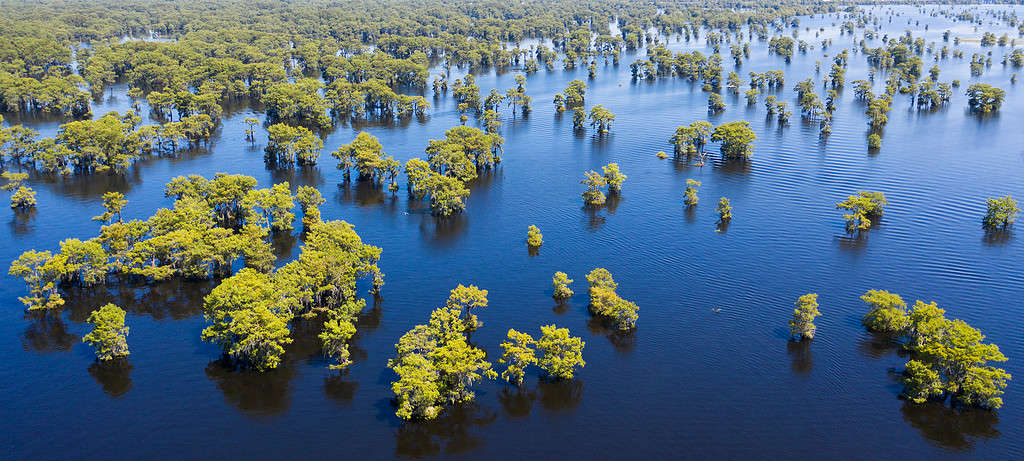
Majestic Atchafalaya River and swamp in Louisiana, aerial view
©Sasha Craig/Shutterstock.com
Of the total acreage, around 29.57 million acres form the land area of Louisiana. This land hosts everything from bustling cities to tranquil rural landscapes and is a hotbed for economic activities like agriculture, industries, and real estate development.
In contrast, the water bodies, including lakes, rivers, and a portion of the Gulf of Mexico, cover an impressive 5.87 million acres. These water areas serve multiple roles, including supporting rich biodiversity, providing recreational opportunities, and contributing to the state’s economy, particularly through fishing and tourism.
Agricultural Influence
A substantial portion of Louisiana’s acreage is dedicated to agriculture. With about 27,700 farms spread across 7.816 million acres, Louisiana boasts a robust agricultural sector. Key crops include soybeans, rice, sugar cane, and cotton, each playing a critical role in the state’s economy.
How Big Is Louisiana
Louisiana is not one of the largest states in the United States. It is the 19th-smallest by area and the 25th most populous of the 50 U.S. states. With a total area of 52,377sq mi, Louisiana is about half the size of Colorado. Alternatively, Louisiana is about 42 times bigger than Rhode Island, the smallest U.S. state.
Animals in Louisiana
Louisiana, with its varied landscapes from bayous to pine forests, serves as an abode for numerous animal species. Each ecosystem houses unique wildlife, contributing to the state’s rich biodiversity.
Reptiles
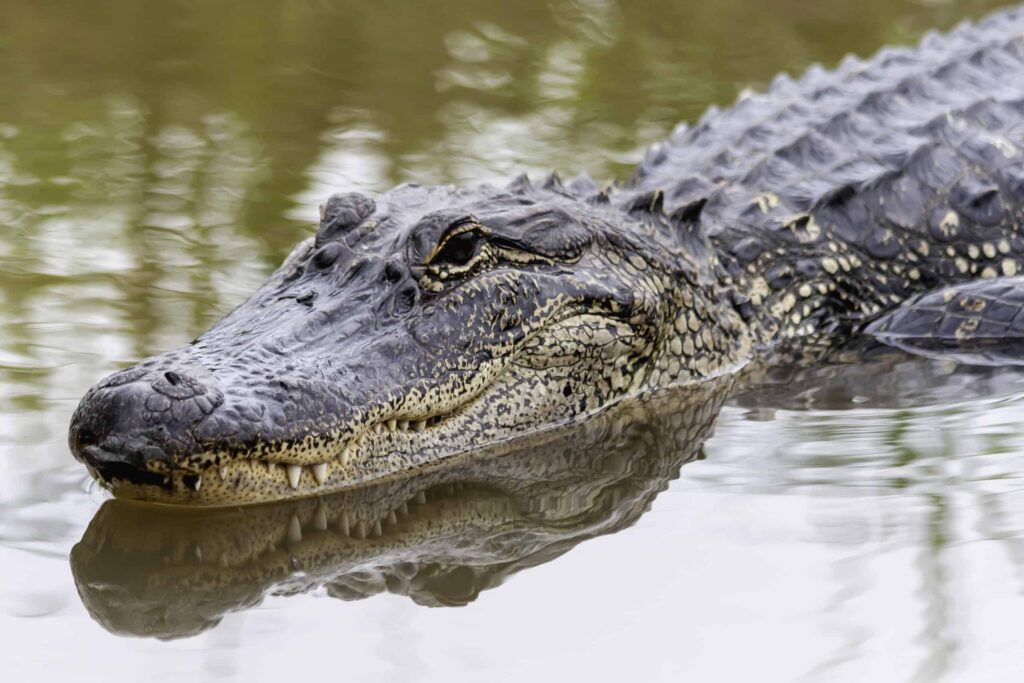
Alligators are dangerous and inhabit many southern U.S. waters.
©iStock.com/Cindy Larson
In the state’s freshwater marshes and swamps, the American alligator reigns supreme. They are vital in controlling the population of certain species, hence preserving the ecological balance. There are also many species of snakes, such as the Timber Rattlesnake or the Eastern Copperhead.
Birds
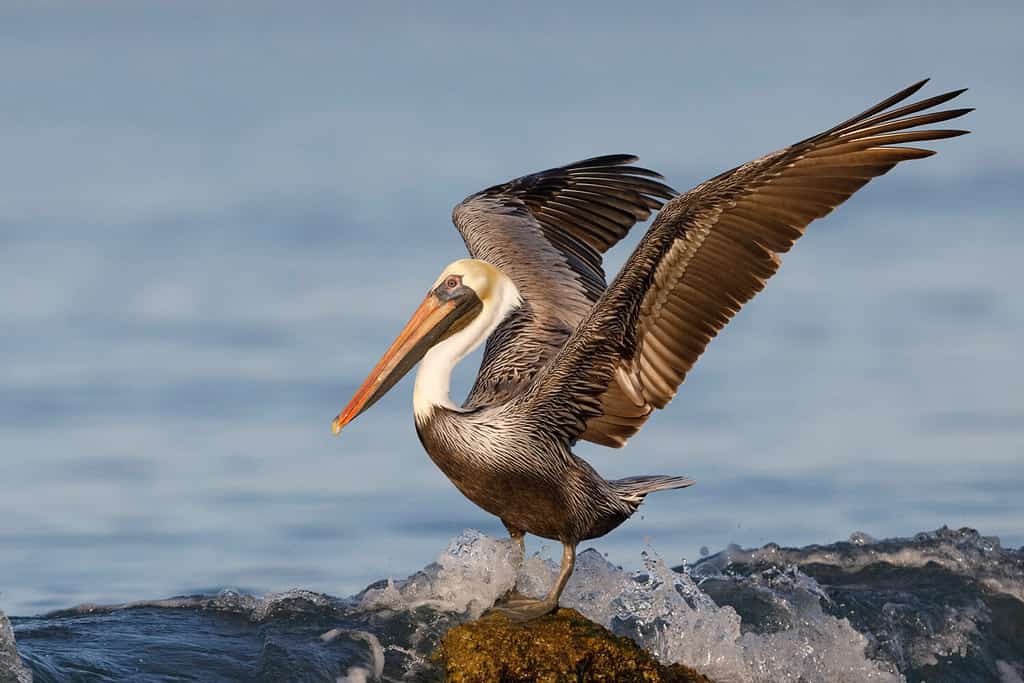
The brown
pelican
is the state bird of Louisiana.
©Brian Lasenby/Shutterstock.com
With over 400 bird species recorded, Louisiana is a haven for ornithologists. The state bird, the Brown Pelican, nests along the coast. Louisiana’s geographical position also makes it a crucial stopover for migratory birds, such as the Prothonotary Warbler, during their long journeys.
Mammals
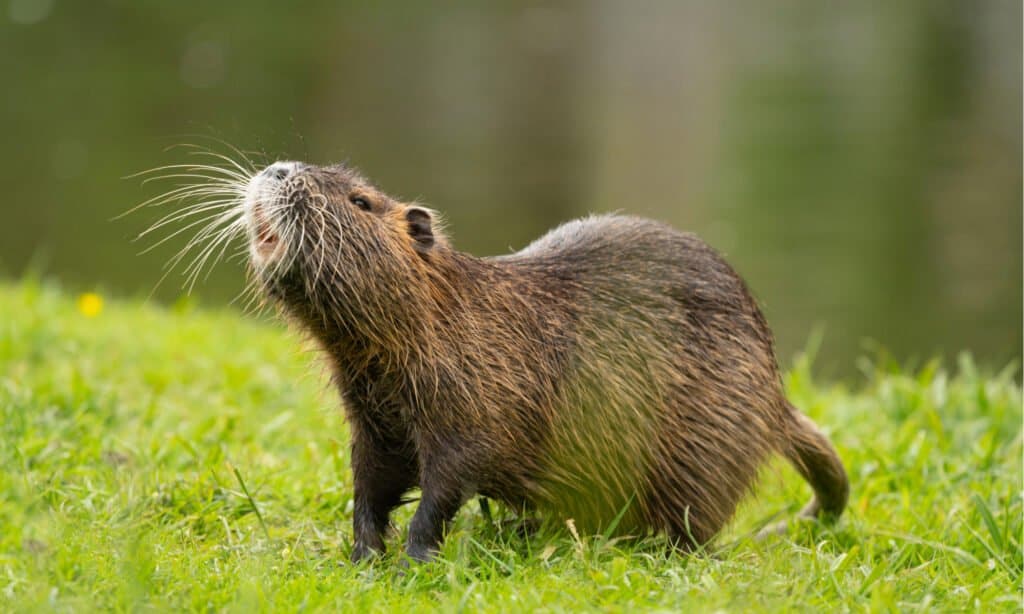
In Louisiana, the government offered bounties in exchange for killing invasive nutria in order to control their population.
©Barbora Polivkova/Shutterstock.com
The state hosts a plethora of mammals. The White-tailed deer is a common sight in Louisiana’s forests, while the marshy areas are dominated by the Nutria, an invasive rodent. Predators, including Bobcats and Coyotes, ensure the stability of these ecosystems by managing prey populations.
Aquatic Life
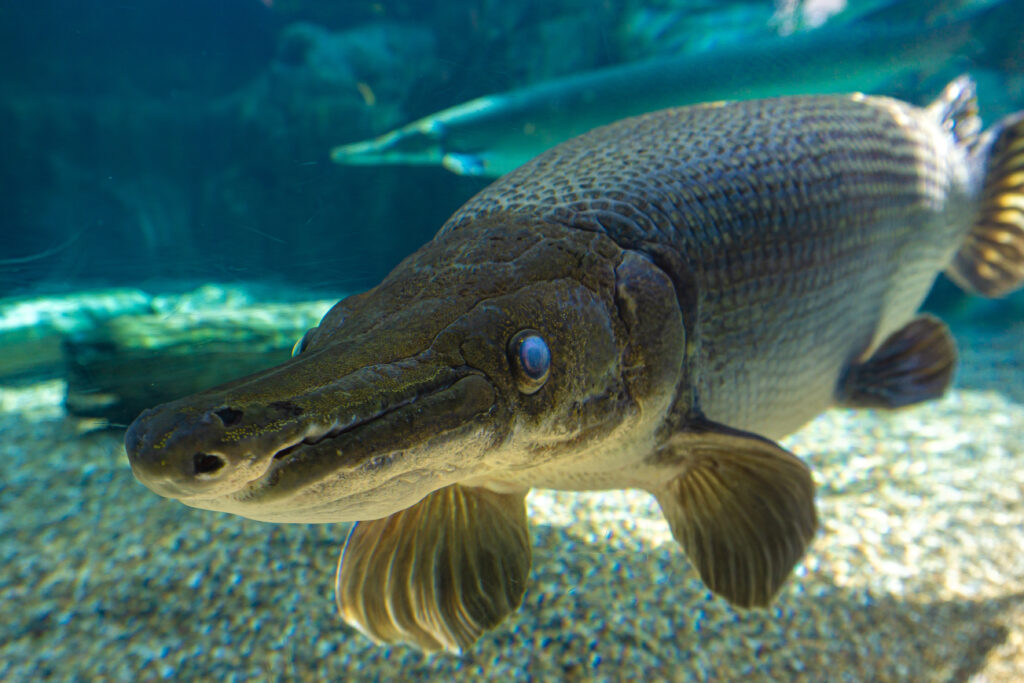
The alligator gar is a “living fossil” found largely in the southern United States.
©TKBackyard/Shutterstock.com
The state’s water bodies are teeming with aquatic life. Freshwater fish like the Alligator Gar, notable for its size and prehistoric appearance, are found in the state’s rivers. The coastline supports marine life, such as the endangered West Indian Manatee and the playful Atlantic Spotted Dolphin.
Endangered Species and Conservation
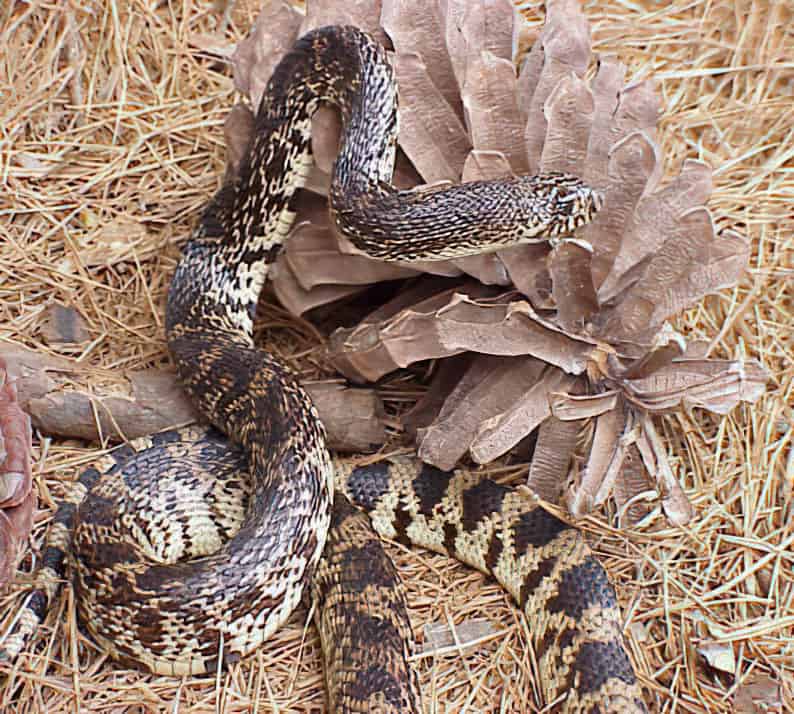
Considered to be one of the rarest snakes in North America, The Louisiana pine snake calls the lush Longleaf pine savannas of west Louisiana and east Texas home.
©Daniel Saenz / public domain – License
Louisiana’s wildlife is not without threats. Species like the Louisiana Pine Snake and the Red-Cockaded Woodpecker are endangered, mostly due to habitat loss. However, concerted conservation efforts are underway, including habitat restoration and breeding programs, to safeguard these species.
Major Cities in Louisiana
Louisiana’s major cities reflect its cultural diversity, economic vitality, and historical significance. These bustling urban centers are focal points of the state’s economic, social, and cultural life.
New Orleans: A Cultural Melting Pot
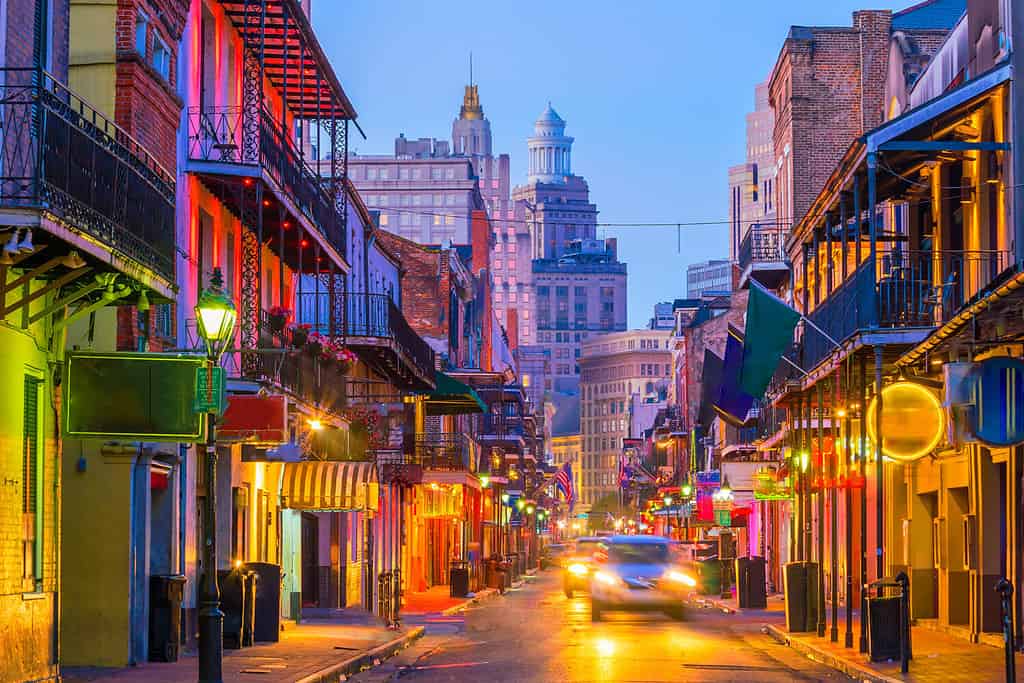
Pubs and bars with neon lights in the French Quarter, New Orleans, LA.
©f11photo/Shutterstock.com
New Orleans, the largest city in Louisiana, is world-renowned for its vibrant culture, music, and cuisine. It hosts the famous Mardi Gras festival, drawing visitors from all over the globe. The city also boasts a rich architectural heritage, with the French Quarter being a prime example.
Baton Rouge: The Capital City
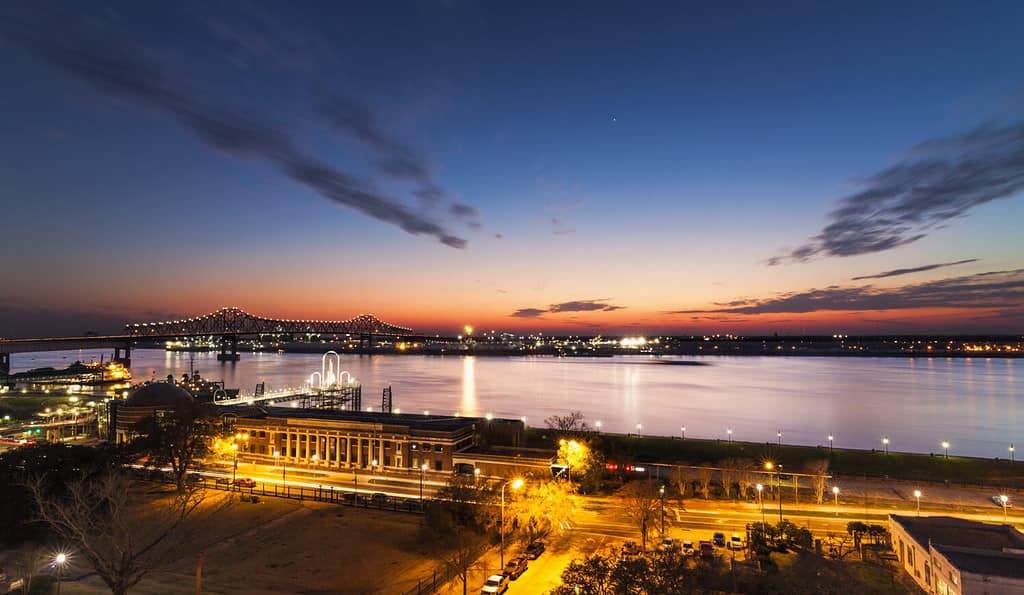
A view of the Mississippi River from Baton Rouge, LA.
©Berkomaster/Shutterstock.com
Baton Rouge, the state capital, houses the seat of Louisiana’s government. It’s also an educational hub with institutions like Louisiana State University. The city’s blend of cultures is evident in its culinary scene, the vibrant arts community, and historic landmarks.
Shreveport: The Commercial Hub
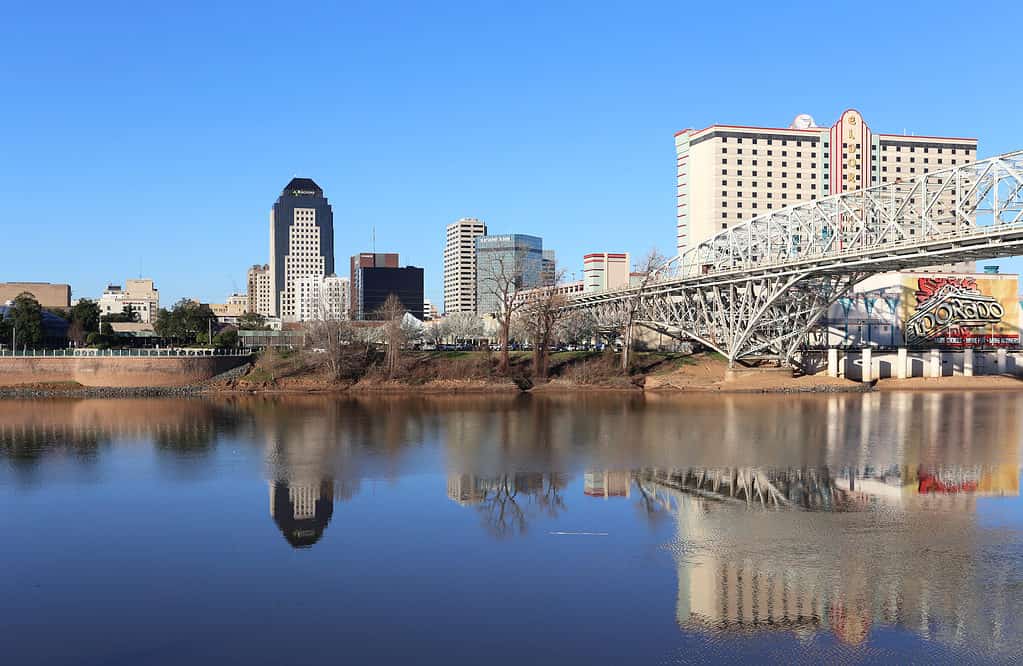
For a brief time during the Civil War, Shreveport was actually the capital of Louisiana.
©Katherine Welles/Shutterstock.com
Shreveport, located in the northwest, is a significant commercial and cultural center. It is known for its riverboat casinos, the annual Red River Revel arts festival, and its influence on the music genres of blues and country.
Lafayette: The Heart of Acadiana

Lafayette is home to many festivals that pass by the Old Lafayette City Hall.
©TheLionHasSeen, CC BY-SA 4.0 – License
Lafayette, often described as the heart of Acadiana, is famous for its Cajun and Creole cultures. The city is a major center for the oil and gas industry and is renowned for its music festivals, like Festival International de Louisiane.
Population of Louisiana
Louisiana is home to a diverse population, a melting pot of different cultures, races, and ethnicities. This diversity is a testament to its rich history and cultural heritage.
Population Count
As of the last census, Louisiana has a population of approximately 4.6 million people. It ranks 25th among U.S. states in terms of population.
Demographic Breakdown
The state’s population consists of a broad mix of age groups, with a median age of around 37 years. Louisiana also boasts a diverse racial and ethnic composition, with significant African American, White, and Hispanic communities.
Distribution of Population
The population is not evenly distributed throughout the state. Urban centers like New Orleans and Baton Rouge have dense populations, while rural areas have a sparser population distribution.
Population Trends
Louisiana’s population has seen fluctuations due to factors like natural disasters, economic opportunities, and urbanization. Migration patterns, both within and outside the state, also significantly influence population trends.
The Changing Size of Louisiana
Louisiana’s landmass isn’t static, it’s shrinking. Over the past century, Louisiana has lost over 2,000 square miles of its coastal landscape, approximately an area the size of Delaware.
Impact of Sea-Level Rise
Sea-level rise, induced by climate change, further exacerbates the loss of Louisiana’s landmass. This phenomenon increases the frequency of coastal flooding and promotes higher rates of soil subsidence, both of which contribute to land loss.
Hurricane and Storm Surges:
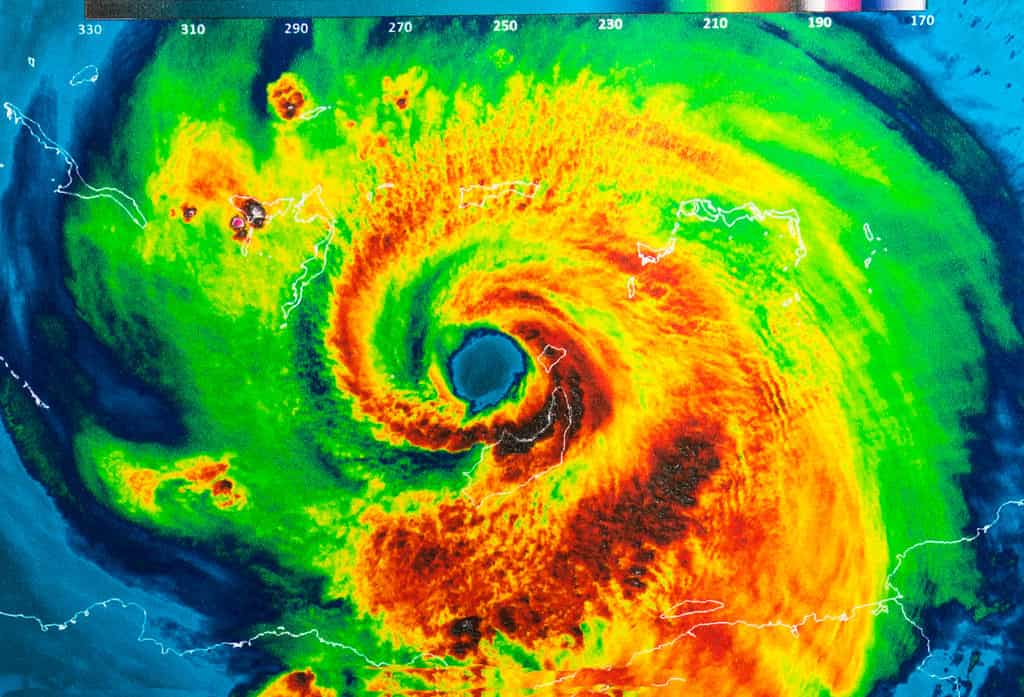
Hurricanes are a big problem in Louisiana, and they have a huge impact on the environment.
©Trong Nguyen/Shutterstock.com
Louisiana’s coastal location makes it vulnerable to hurricanes, which cause dramatic changes in the state’s landmass. For instance, Hurricane Katrina in 2005 and Rita later that year transformed approximately 217 square miles of wetlands into open water.
Efforts to Preserve:
Despite these ongoing challenges, the state has implemented various strategies to manage and mitigate land loss. The Coastal Protection and Restoration Authority (CPRA) has embarked on ambitious projects that aim to rebuild wetlands, construct new levees, and restore barrier islands and shorelines.
Key Takeaways
This journey through Louisiana has shed light on the state’s diverse and unique characteristics. Known for its rich history, culture, and southern charm, Louisiana stands out in more ways than one. Its geography and size make it a crucial region, with diverse terrain stretching from lush forests to expansive wetlands.
While its area in square miles and acres is significant, these numbers don’t remain constant. Factors such as coastal erosion, sea-level rise, and storm surge continually reshape the state’s boundaries. These changes bring about new challenges, emphasizing the importance of conservation and land management efforts.
The photo featured at the top of this post is © iStock.com/gladder
Thank you for reading! Have some feedback for us? Contact the AZ Animals editorial team.






